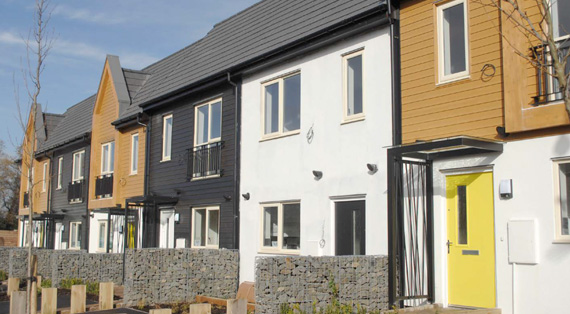The power of offsite homes for unlocking levelling up
Michael Gove’s recent comments about housing targets and the newly-announced levelling-up legislation has brought fresh interest in the role of MMC in meeting our future housing needs – in both quantity and quality.
According to No 10 the Government has confirmed it is still very much committed to building 300,000 new homes a year and has also stressed the importance of building housing of the right type and quality. The Government has now also published its Levelling Up and Regeneration Bill, with plans to devolve more powers locally in England in the hope that frequent local opposition to new housing schemes can be overcome.
Mr Gove, Secretary of State for Levelling Up, Housing and Communities, said: “We’re going to do everything we can, but it’s no kind of success simply to hit a target if the homes that are built are shoddy, in the wrong place, don’t have the infrastructure required, and are not contributing to beautiful communities.”
But what if we can have it all – a steady production of well-designed new homes in a range of tenures, built in the right places and to consistently high-quality standards. What if these homes could also help residents cope better with current cost of living pressures?
LHC’s vision for public sector housing would achieve this, and widespread use of MMC would also drive progress towards Net Zero targets and tackle fuel poverty.
MMC as saviour for levelling up?
Current planning policy has been regularly namechecked by Government as blockage to housebuilding progress but LHC’s report, ‘How public sector procurement aids the levelling up agenda’ explores some different solutions.
Bringing together sector experts from LHC, the Home Builders’ Federation (HBF), Northern Housing Consortium (NHC) and industry equality, diversity and inclusion campaigners, the report looks at levelling up through a housing and procurement lens.
The report recognises that raising regional housing standards and moving numbers beyond the current 244,000 homes built annually requires a significant shift in the way we build homes in the UK. MMC and offsite building have the potential for reaching the right volumes, of the right quality and at future-ready energy efficiency standards.
Procuring for lower carbon homebuilding
Procurement has a pivotal role in helping secure greater numbers of MMC and sustainably-built homes – alongside traditional methods still very much a major focus in LHC’s frameworks. However, by working more closely with clients and suppliers, framework providers can illustrate MMC’s social, economic, and environmental benefits and make it a significant feature in the tendering process. We can also increase connections between social housing providers and the wider homebuilding and construction supply chain to make collaboration and risk sharing happen.
The Government and Homes England have identified MMC for its potential to alleviate housing shortages, with the Affordable Homes Programme now requiring projects to deliver 25% of homes using these methods.
To ground these aims, wider adoption of offsite technologies is needed alongside a willingness to educate and change the way homes are designed, procured and delivered. This is in addition to a clearer, longer-term pipeline of work to engender the necessary confidence in MMC, which can produce ‘the right sort of houses’ Downing Street refers to.
Making MMC mainstream
The policy impetus is now there to speed up output in lower carbon homebuilding and make MMC and offsite techniques part of our homebuilding DNA. From 2025, the Future Homes Standard will require new homes to reduce their carbon emissions by 75-80% compared to today’s requirements.
Constructed in quality-controlled factory environments, MMC homes are airtight, warmer and more energy efficient than traditional brick builds – and quicker to build. They can also help tackle carbon emissions by providing homes at EPC band B or higher.
LHC has so far supported more than 5,300 MMC-build social homes, including an inner-city housing renewal scheme in Anderston, Glasgow providing 542 new dwellings mainly for social rent. Delivered by Sanctuary (Scotland), Glasgow City Centre and the Scottish Government, appointed offsite specialist C-C-G used MMC through its IQ timber frame system to yield better thermal and energy efficiency.
In Parsons Cross, Sheffield – an area with a recognised need for affordable homes – four, four-bedroom family homes were completed for Sheffield City Council in 10 months. Partnering with modular builder M-AR through a Consortium Procurement Construction (CPC) frameworks, the development was precision-engineered in a quality-controlled factory environment in compliance with ISO9001 procedures.
MMC at present is only being by early adopters – and not yet to its full potential. But the sector may be on the cusp of real progress with the Levelling Up and Regeneration Bill and rhetoric from Government about building the right quality homes, in the right place.
Now, explicit acknowledgement that MMC-built homes are a solution to building in numbers, reducing fuel poverty, and reaching Low Carbon targets is needed. This would crystalise confidence in the market and encourage collaboration and aggregation of projects from housing providers to help raise living standards for those who most need it.
You can read LHC's levelling up report here.


